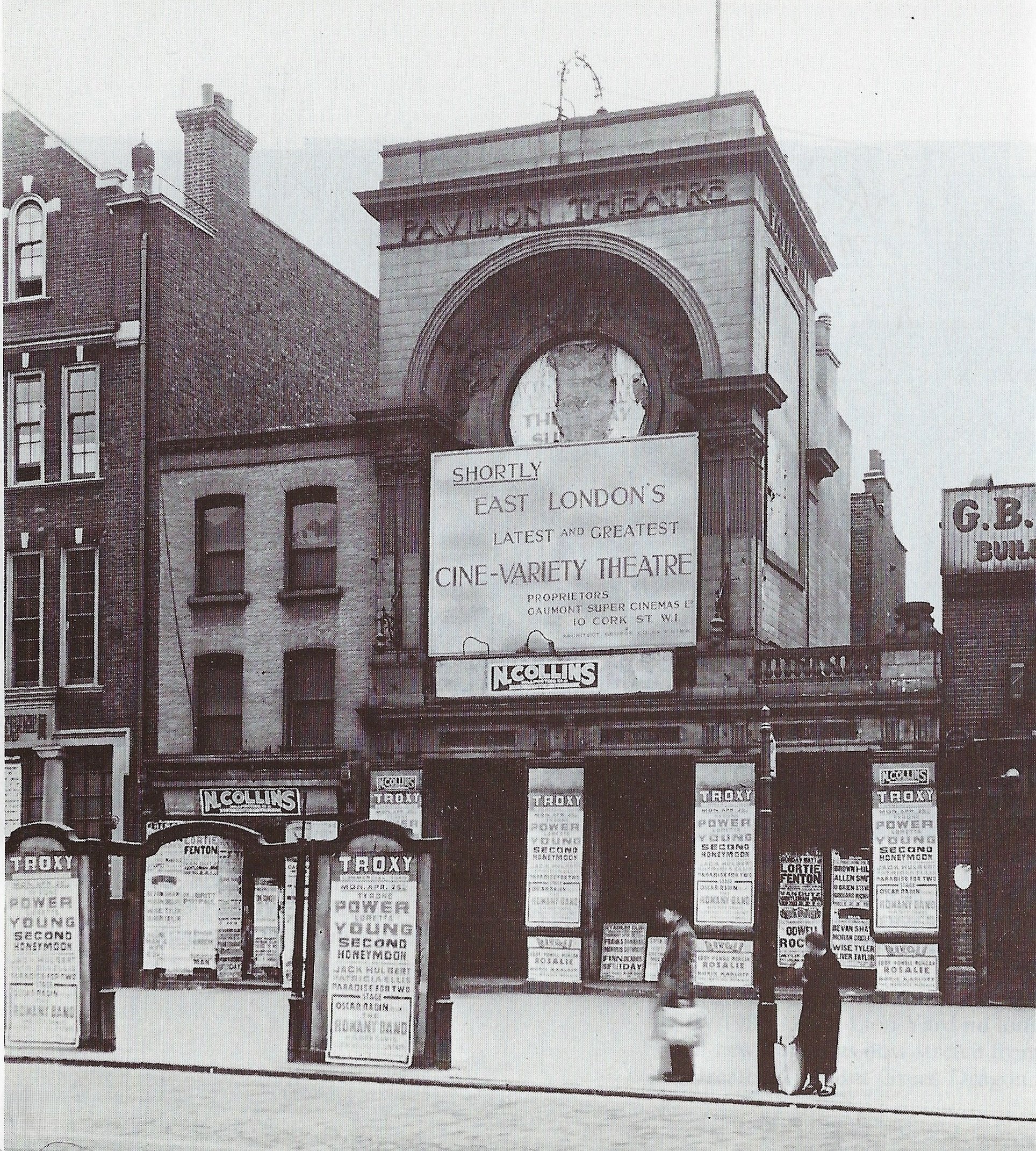Entertaining Eastenders
Click here to download the Whitechapel Stories booklet
At the Pavilion Theatre on Whitechapel Road – just west of the junction with Vallance Road – you’d find all manner of Yiddish-language performances: plays, cantorial concerts, High Holyday services, political rallies, boxing, and wresting promotions. This photo (below) shows it in 1938, shortly after closure, with advertising posters for another local venue: the Troxy on Commercial Road.
The Rivoli Cinema stood slightly further west (near today’s Ibis Hotel) and was one of the first ‘super cinemas’ in the East End when it opened in 1921. The ornate façade was decorated with white tilework, and inside the auditorium, the decoration was in a rich French Renaissance style, with seating provided in stalls and circle levels.
It’s had a roll call of names, and been re-built and adapted, but since 1848 the Genesis Cinema site on Mile End Road has been an entertainment hotspot. From its early days as the Eagle pub, it evolved into Lusby’s Music Hall and Temple of Varieties, proclaimed to be the “Largest, Coolest and best Ventilated Hall in London”. After a fire in 1884, it was rebuilt – to the designs of noted theatre architect, Frank Matcham – as the Paragon Theatre of Varieties, hosting stars such as Charlie Chaplin and Stan Laurel. Since 1912 it has been a cinema, through several incarnations, until it was taken over by Tyrone Walker-Hebborn in 1998 to create the Genesis we know today.
Pavilion Theatre, Whitechapel Road (1938)
Rivoli Cinema, Whitechapel Road
Paragon Theatre of Varieties, Mile End Road
Playbill from the Paragon Theatre of Varieties (1910)
Empire Cinema, Mile End Road (1937)





